#gay victorian
Text
Writing Worlds: Homosexuality in Historical Settings

As someone who loves period romances and craves romantic relationships between queer men, it’s very alluring to write queer romances set against the backdrop of historical settings and time periods. But, due to the treatment of homosexuality for a lot of our world’s history, it can make it tricky to know the best way to handle this topic. Consider this to be a sister post to go along with my Writing Romance: Courting post. The two go hand-in-hand.

ESCAPISM VS REALISM
The first hurdle is to decide whether your story is an escapist fantasy or favors realism. In an escapist historical queer romance, the queerness is simply not an issue. The prince can flat out tell his parents to arrange his marriage to male suitors, and the only real reaction is his mother immediately listing off good matches for him. The conflict has nothing to do with the fact that the relationship is between two same-sex characters, and would work just as well for a heterosexual romance story. With an escapist fantasy, you can show the Count of Yorkshire navigating the hardships of courting by having multiple young men vying for his hand, or the whirlwind romance as he catches the eye of the Duke of Orleans. And this romance can be just as open and public as any straight relationship. This option would fall under Historical Romanticism, the term used for when historical settings are made to be more idyllic and favorable than they likely were in real life. The only media where this approach tends to show up often is Fantasy, in worlds where homophobia simply never really existed. The Elder Scrolls is one such setting where male gods are married to one another, other gods change genders and pronouns as they like, and your player character is free to romance anyone of any gender as well as adopt without anyone making biggotted remarks.
On the other hand, Realism in a Historical Queer Romance is going to come prepackaged with a lot of tension and angst, as it’s automatically a forbidden romance. Because homophobia is a real issue that real queer people deal with, having queer characters deal with these issues can help your queer audience feel seen as these fictional characters can relate to their own life experiences. It’s also just more historically accurate to have queer lovers needing to tiptoe around behind people’s backs and hoping they don’t get caught. However, due to this prejudice, it’s also very easy for such settings and stories to come off as depressing, and can perpetuate unpleasant tropes in queer media, such as Bury Your Gays, Unhappily Ever After, and downer Nomance endings. Because their relationship isn’t “appropriate” for public eyes, it makes it hard for the couple to have a truly happy ending. For someone who’s tired of dealing with homophobia in their own life, or it just being present in almost all queer media, it can be tedious for those who want an escape to enjoy two guys smooching while looking dapper in period costumes.

Homosexuality and Religion
As a medieval historian, I actually did a full research paper on homosexuality in the middle ages as a part of my final for one of my medieval history classes. I still have the paper saved, so let me share an abridged version. Pagan cultures might have had some issues with homosexuality, such as the Norse favoring the “tops” over the “bottoms”, a sentiment shared by both the Greeks and Romans. However compared to later eras of history, these Pre-Christian cultures had little problems with same-sex relationships. Every Greek God but Ares, Hephaestus, and Hades had at least 1 male lover, Emperor Hadrian had his boy-toy Antinous deified after he drowned in the Nile, and the Sacred Band of Thebes was made up entirely of same-sex lovers. The idea that homosexuality was wrong only emerged with Christianity. Just... not as soon as you’d think. Christianity became a wide-spread faith across Europe around about 300 AD, mostly spread by Constantine’s deathbed conversion to Christianity. However, it would not be until the 12th century that homosexuality as a sin would emerge. This shift first started during what is known as the Medieval Renaissance when Christian theologians like St. Ambrose, St. Augustine, and St. Jerome altered the theological discourse on sin and virtue. Prior to the Medieval Renaissance, the mindset was that simply being Christian and accepting Christ as one’s savior was all it took to get into Heaven. After the Medieval Renaissance, the focus shifted to individual sin and the worthiness of the individual soul. They came to view Earth as sort of a testing grounds or waiting room, and any temporary Earthly pleasure was a wicked temptation sent by Satan to lead men astray. How you did on the test impacted whether you passed or failed. One thing that was declared a sin was fornication without the prospect of procreation. And this went for everyone. Any sexual act that would not result in childbirth was a sin, because you were doing it for the pleasure, not for the purposes of making a baby. Furthermore, any position except Missionary was also sinful, again in an attempt to limit pleasure. Since cis-gendered homosexuals cannot procreate, any homosexual acts were universally labeled as a sin by happenstance. Later in 1179, Peter Comestor proposed to the Third Lateran Council a link between the biblical condemnation of sodomy with explicitly condemning homosexuals, and not just anal fornication as a whole, even stating that clerks found guilty of this act should be removed from office, and laymen should be excommunicated from the church. It is Peter Comestor and his stance on homosexuality that truly caused homosexuality to be labeled as a sin on principal, and is why so many modern Christians still believe homosexual relationships are sinful by nature. However, it’s worth pointing out that the time from when Christianity was a widespread faith in Europe (approx. 300 AD) to the Third Lateran Council (1179) is a span of 879 years. As of this point in 2023, the time between Comestor’s condemnation of homosexuality and the present is only 844 years. Meaning that Christianity has a longer history of tolerating homosexuality than it has condemning it. I say all of this because in any setting where Christianity is not a part of the worldbuilding, there is no reason to have homophobia, unless you replace Christianity with a similarly homophobic fictional religion, as George RR Martin does with the Faith of the Seven in A Song of Ice and Fire. As for Judaism and Islam, I’m at a loss there. My studies didn’t really lead me to those topics, and I can’t offer much insight there.
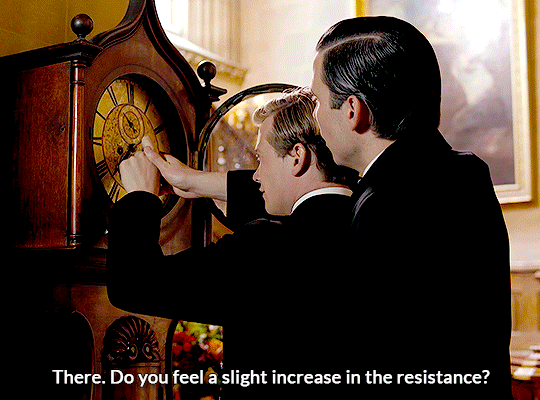
Handwaving Escapist Diversity
Let’s be real, we can’t even cast People of Color in fantasy stories without racists crapping their pants, so unfortunately, we’re going to face similar problems having queer couples openly courting each other in a historical setting. But, there are a few ways around this where we can have our cake and eat it too without the homophobes being able to hide behind “historic accuracy” as a reason to have a problem with queer romances in historical periods. It’s all about the genre. Let’s look at some of the genres we can use.
Historical Fiction: This is the base form. Any period piece is going to be historical fiction. However, Historical Fiction comes in a wide array. Historical Romanticism is the lighter approach, simply putting make-up on the era to make it more palatable and appealing. Think of Bridgerton where the dresses are shaped historically and the characters behave historically, but the Queen is a woman of color, and the dress materials are far more colorful and bright than they would have been at the time. It’s still the Regency era, just with a bit of rouge. On the other hand, there’s Alternate History. Historical settings where a major deviation has occurred in the timeline. Whether the Roman Empire never fell, the British crushed the American Revolution and took over the entire world, Christianity never caught on and the Roman Pantheon is the most widespread belief system, or the industrial revolution exploded even harder, resulting in a more Steampunk vibe. A major upheaval has altered the face of history, and your queer romance is set in an utterly changed world with a different timeline.
Steampunk: As I just touched on, your world can be more technologically advanced, however, Steampunk can also be a genre for completely fictional worlds, giving you a great way to have a story set in an era with an 1880s - 1910s aesthetic, but easily exist as it own world with its own history and values where homosexual relationships aren’t a problem. Steampunk is also the most optimistic and aesthetically oriented of the science-fiction -Punk genres, compared to the much bleaker and more cynical outlooks of Cyberpunk, Diesel Punk, and Gothic Punk.
Gaslamp Fantasy: Basically, Steampunk but with fantastical elements. It keeps that late Victorian - Edwardian aesthetic, but adds magic, faeries, dragons, vampires, etc. Now, Steampunk leans more Sci-fi, while Gaslamp Fantasy is more well.... Fantasy, so Gaslamp Fantasy does tend to lose some of the technological aspects of Steampunk, but it can also overlap with Magitech, a subgenre where machinery is powered and propelled by magical energy. So, you can very well have a Steampunk Gaslamp Fantasy where all of the steam and gears and machinery is powered by magic. It’ still Steampunk, so long as that train is powered by shoveling magic energy crystals into the furnace, instead of coal. Howl’s Moving Castle is a good example of how the two can coexist. There are normal trains as we see in Sophie’s town, but we also see Howl’s castle which can move because of Calcipher, a fire demon that needs to constantly eat a fuel source of one kind or another. The world is full of witches, magic, and curses, but there’s also muskets, trains, airplanes, zeppelins, and a castle that spews steam and smoke as it wanders the countryside.
Paranormal Romance: Especially common with Vampires, but the fallout of Twilight and Alpha/Beta/Omegas in pop culture has also led to a rising interest in Werewolf stories, and a recent trend has also swept Faeries into the pop culture spotlight as well. All three offer stories where one or both of your characters is an immortal (or very long-lived) individual. Perhaps their world is homophobic now, but when they met and fell in love, it was perfectly acceptable. Perhaps being alive for 800 years piqued the main character’s curiosity and they decided to give it a try. The long history of homosexuals being demonized has led to a large percentage of queer people identifying with the monsters and villains of media, causing them to see themselves in the hated monsters, demons, and vampires that threaten the heterosexual heroes of old.
Historical Fantasy: For everything else that’s not within that Victorian-Edwardian window, Historical Fantasy has you covered. From Cyclopes and Sirens in Ancient Greece to Dragons and Goblins in Medieval France, or a mermaid ending up in an Americana freak show, this pretty much covers ever kind of fantasy romance in a historical setting that’s not covered by Paranormal Romance or Gaslamp Fantasy.
Renaissance Punk: It’s like Steampunk, but the world’s technology resembles the contraptions of Leonardo Da Vinci, as opposed to the clockwork, gears, and steam aesthetic plastered onto the turn of the 20th century that Steampunk offers. Also called Da Vinci Punk.
Space Punk: If you’re wanting to lean more Sci-fi, you can do Space Punk. Think Treasure Planet, though I could also call that Sail Punk. It has a very Victorian clothing and technological aesthetic, but then space is full of a breathable Ethereum, and even Doctor Doppler’s “space suit” looks closer to an old-timey diver’s suit. But the ship has solar sails, the mast charges up with a power source that propels the ship into space, lockets project holograms of still photographs, cybernetic prosthetics are technologically advanced, and aliens are a common sight, even for the poorest commoner.

Same-Sex Courting for Escapist Romance
I touched on this in my Writing Romance: Courting post, but I’ll cover it again because it’s especially applicable here. The rules of courting in the 1800s relied heavily on gender roles. So, how does one make sense of courting rules when the couple are the same sex? The basic rule of thumb is that whoever is higher in status is the one to be chased, while the one of lower class does the chasing. If a Duke is looking for a husband, does the Duke chase Viscounts or do Viscounts chase the Duke? Always, the Viscounts chase the Duke. A Duke is a valuable husband, a prize catch those Viscounts would want to have. What if the romance is between two men of equal class? Two Dukes falling in love? The one who would take the more passive role is likely to be whichever is higher in the line of succession. During the courting phase, an elligible queer bachelor is likely to recieve many gentlemen callers. They would come to the bachelor’s house where his family could keep an eye on him, and judge his prospects. They would bring gifts and trinkets, and sit in the tea room, sewing room, drawing room, or whatever room is used to entertain guests. Gentlemen callers would then talk with the bachelor, recite poetry, play the piano, or whatever else they could to impress the bachelor and his family. Again, as I said before, the one being visited by gentlemen callers is whoever is higher up in the chain of nobility. The Duke’s family is going to scrutinize every gentleman who calls on their son, while the Baron’s family is going to urge him to call on every queer man who outranks him. The other thing to keep in mind is inheritance. The first-born son inherits everything, so a second-born son or third-born son will get nothing from his father, or best case scenario, he will get a small fraction of the family fortune from his father or older brother. In order for these younger sons to stay in the lifestyle they were raised in, they will have to marry someone who is coming into his fortune. In a setting where women can inherit her father’s entire estate, a lesbian would function the exact same as a gay man. Ergo, any queer romantic lead who is not inheriting his father’s full estate must seek a first-born son who will inherit his father’s estate. Meanwhile, if your protagonist is a first-born son, he is far more likely to be chased by the younger sons of distinguished families. Finally, when it comes to the social season and courting at dances, queer nobles would likely wear something to distinguish themselves from the heterosexual nobles at the party. Something to let the other guests know their preference in dance partner. That way, gentlemen know not to ask the Baroness of Agincourt to dance, but that the Duke of Orleans is all too eager to receive male attention.

Lavender Marriages in Realist Romances
A lavender marriage is when a queer person marries someone of the opposite sex to disguise their homosexual dalliances, such as Renly Baratheon marrying Margaery Tyrell, or Laenor Valyrian marrying Rhaenyra Targaryen. In these instances, the woman knew her husband was queer and was willing to work with him to keep the secret. However, sometimes the wife wouldn’t know, and the husband was keeping his sexuality a secret from everybody. However, it was usually hard for a noble to keep his dalliances completely hidden from the court, as in both of these cases, both Renly and Laenor were well-known around court to be fanciful of male attention. Everyone typically knows the wedding is a sham, but tend to turn a blind eye to it regardless. I know I’ve been using male examples this whole post, but this does also work with lesbian romances. I believe the term is still lavender marriage with a lesbian, but I could be mistaken.

Actual Homosexuality in Historical Time Periods
Scholars debate the exact nature of their relationship, but in Arthurian Myth, King Galehaut is conquering his way across Arthur’s Kingdom when he challenges Arthur to a duel for the throne of Camelot. However, upon seeing Sir Lancelot, Galehaut offers to concede to Arthur if he’ll introduce him to Lancelot. From then on, Galehaut and Lancelot became Very Close Special Guy Friends, and it’s suspected that the pair might be lovers, or at least that Galehaut is in love with Lancelot.
Leonardo Da Vinci was involved with one of his male models, Pietri Bandielli, who Da Vinci used as a model for Jesus. Which also means, If you pray to the white version of Jesus with the little beard and long brown hair, congratulations! You’re worshiping a gay Italian male model that used to have sex with Leonardo Da Vinci.
Hans Christian Andersen fell in love with the son of his financier, Edvard Collins. But, when Collins became engaged and later married to Henriette Tybjerg, a heartbroken Andersen wrote the story of The Little Mermaid as an allegory for his unrequited love. Collins was the handsome prince who didn’t return the mermaid’s feelings, Henriette was the Temple Girl who stole the mermaid’s love, and Andersen himself was the mermaid, unable to verbalize her true feelings, and suffering great pain just to be near the one she loves.
It’s mostly speculation, but it’s believed that Richard I of England had a clandestine homosexual relationship with Phillip II of France. The majority of evidence comes from one particular courtier’s writings who described them as eating from the same dish and not being separated by their beds at night. However, it’s hard to say if this is evidence of a homosexual relationship, or just the flowery prose writing of the time describing a very close bromance.
Edward II of England had little interest in war. Hoping to toughen up his son, Edward’s father assigned a squire to Edward that excelled in tournaments, Piers Gaveston. However, this backfired spectacularly, as Edward fell in love with Piers. Gaveston flaunted his sway over the king, being so bold as to wear royal purple and the queen’s jewelry during Edward’s coronation. Gaveston was hunted down and beheaded by a group of barons, and Edward himself was killed with a red-hot poker shoved up his backside.
King James I of England was a well-known bisexual, even having a secret passageway linking his bedchambers with that of George Villiers. James’ male lovers experienced royal favoritism and protection, as James absolved one male lover for poisoning a political rival, and twice protecting Villiers from impeachment for incompetency. Following James’ death, Villiers was struck through by a sword.
Anne Lister was a noblewoman who often dressed in masculine clothing and kept a coded diary which recounted her many and varied lesbian affairs over her lifetime. Lister even earned the nickname Gentleman Jack, and is often regarded as the First Modern Lesbian.
Pirate ships were one of the few places where gay marriage was legitimate. Pirate captains could perform marriage ceremonies, and marriages between male crewmates was not uncommon, even having rules about sharing property and distrubution of goods among crew members with a married couple on-board. As well as the distribution of property following the death of a same-sex spouse.
While we know that brothels and prostitution has existed since Ancient Greece, in the 1700s, it was possible to find a Molly House. A house which featured male prostitutes who catered to male clients.
Women were not believed to have sex drives, so when two women loved each other, they were often called “bosom buddies”, and two women living together without a man in the house was called a Boston Marriage.
In the medieval era, it was believed that a woman’s womb was naturally cold and had to be kept warm with regular activity. If the woman was unmarried, the womb was to be kept warm by hand. But since using her own hands would be sinful, it often fell to the woman’s female servants to do the deed.
Men and women often existed in entirely disconnected social spheres. For a man, he would go to work where he would only work with men, after work he would go to a local bar or club that was exclusively for gentlemen, and following dinner, he would often retire to a private room in his home or another man’s home to sit, smoke, and talk with his male colleagues. Even within a single house, men would retire to the gentlemen’s lounge to smoke, while women would depart to the sewing room, tea room, or drawing room to have afternoon tea with the other ladies. As men would spend their entire days solely in the company of men, and the same for women, many men and women only spent time together in public spaces, during meals, and when going to bed. Even then, it was not uncommon to see households where the man and woman had separate bedchambers, and the woman would only sleep in the man’s bedroom when he desired sexual congress. Even the Palace of Versailles had separate chambers for the king and queen. This gave queer couples plenty of time to sneak around without anyone being the wiser.

This to Keep in Mind
One of the biggest issues behind the AIDS epidemic was the promiscuous nature of gay lovers in the 1970s. Because gay men had to be discreet, they would often have anonymous relations in public spaces like bathhouses and bars. This combination of unsafe sex practices and anonymous lovers caused STDs to run rampant through the community, and allowed the AIDS epidemic to have a devastating impact on the queer community.
In Victorian great houses, the footmen were effectively the “face” of the manor’s servants, so height and attractiveness was favored when hiring them. As such, footmen make for excellent romantic interests in a historical time period, since they’re required to be attractive to be hired.
The mafia has a long history of working with and supporting the LGBT community. In the 1920s, nightclubs in the black districts of Harlem would host drag balls, these events being known as Harlem Nights. The mafia helped these groups to meet without police interference for a kickback fee. Even the Stonewall Inn had Mafia protection. In a world where homosexuality is still seen as a sin, think about what groups are willing to turn a blind eye in the interest of profit.
Homosexuals were among those rounded up the Nazi Party during the Holocaust. Just as Jews were forced to wear the Star of David on their clothes, so too were homosexuals marked with a pink triangle. The Nazi Party also destroyed research on gender and sexuality, which destroyed a lot of evidence that had been gathered of queer existence up to that point in time. Today, the Pink Triangle is among the reclaimed symbols used by the queer community.
Queer people found ways to signal to one another. At different points in time, the visual cues have included wearing green ties, having a red carnation in their lapels, and in the 1970s, a bandana in the back pocket was a common way of indicating someone was a homosexual, and the color would even further indicate what they were looking for. Many modern slang words even started out as gay code words so that gay people could talk in public without drawing attention to themselves. Codes like “buns” for butt are still in use today, but got their start as codewords to keep gay conversations undercover.
While we often remember the Red Scare of the 1950s, we often don’t mention that there was also a Lavender Scare at the same time, which hunted down homosexuals just as the Red Scare hunted for communists. It was the belief that homosexuals would be more likely to undermine American policies or spread information to enemy nations, and thus had to be kept down.
Rich men often kept “actresses”, paying for apartments for them, paying for their food, drink, fun, costumes, and whatever else. If they really were an actress or otherwise a struggling entertainer, it was not unheard of for the wealthy benefactor to pay to get the actress roles, pay for tutors and lessons, or even buying them an entire theater. It’s not so hard to believe that a wealthy gentleman could keep a male model, actor, or artist in good stead, especially because artists in particular flourished in periods where rich people would sponsor and commission artists to paint for them. And this can work for either type of story, as a husband or wife would be equally annoyed to learn that the Duke of Orleans is keeping a young actor on the south side.

Gif Sourcing:
1. Bridgerton (2020 - present)
2. Game of Thrones (2011-2019)
3. Mary, Queen of Scots (2018)
4. Downton Abbey (2010-2015)
5. Victoria (2016)
6. Cloud Atlas (2012)
7. A Place to Call Home (2013-2018)
8. Mary Shelley (2017)
9. Brokeback Mountain (2005)
#historical fiction#writing romance#gay romance#historical romance#period piece#period drama#courting#courtship#gay history#gay historical fiction#gay victorian#gay period piece#gay period drama#queer romance#queer history#gay love story
333 notes
·
View notes
Text
Gay Victorian Book List
Hey there! I'm making this collaborative list of novels set in Victorian Age that have some sort of gay, m/m representation. Edwardian Age is fine as well. Please, do leave your recommendations in the comments below, I'd be happy to add them!
I'll mark with an asterisk (*) the books I have read myself.
Written in 19th century
The Sins of the Cities of the Plain, by Jack Saul (1881)*
The Picture of Dorian Gray, Oscar Wilde (1890)*
The Green Carnation, by Robert Smythe Hichens (1894)
A Marriage Below Zero, by Alan Dale (1889)
Fridolins heimliche Ehe (Fridolin's Mystical Marriage), by Adolf Wilbrandt (1875)
Written in 20th century
Maurice, by E.M. Forster (1914)*
Imre: A Memorandum, by Edward Prime-Stevenson (1906)
Desire and Pursuit of the Whole, by Frederick Rolfe (1904)
The Prussian Officer, by D. H. Lawrence (1914)
The Garden God: A Tale of Two Boys, by Forrest Reid (1905)
The Immoralist, by André Gide (1902)
Tonio Kröger, by Thomas Mann (1903)
Death in Venice, by Thomas Mann (1912)
Contemporary
The New Life, by Tom Crewe (2023)
The Invention of Love, by Tom Stoppard (1997)*
An Unseen Attraction, by K.J. Charles (2017). Trilogy.
The Prince of Mirrors, by Alan Robert Clark (2018)
#queer victorian#victorian age#victorian literature#queer books#gay victorian#queer victorian books#victorian era#19th century#historical novel#oscar wilde#gay representation#book recs#lgbt books#pride reads
47 notes
·
View notes
Text
why do we as dykes not have a cruising culture… sometimes i do not want the requisite first date staring soulfully into each other’s eyes and talking about our childhoods sometimes i want one brief sizzling glance at the grocery store and have it be immediately understood that i want two or perhaps three of your fingers inside of me as i cling to your jacket for balance in the single-occupancy bathroom and muffle my moans into my fist
#blushing#every time my gay best friend talks abt cruising i feel like a victorian street urchin pressing a grubby hand against the shop window#i mean to be real i want both. who am i kidding i’m a lesbian i love talking about childhoods and long soulful stares
1K notes
·
View notes
Text
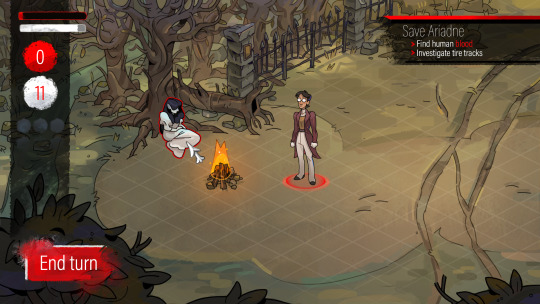
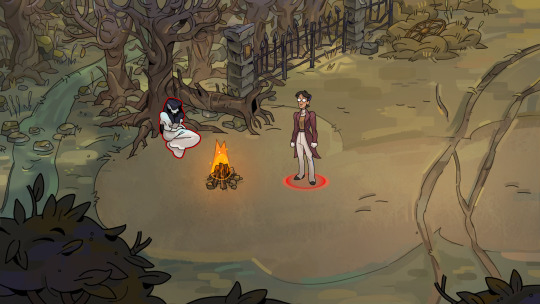
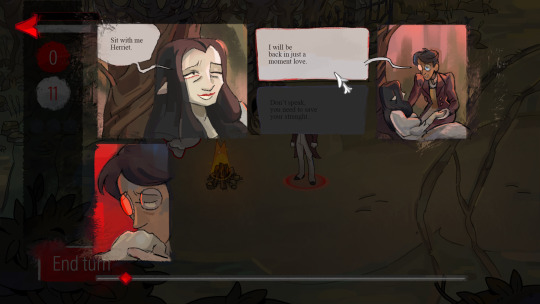

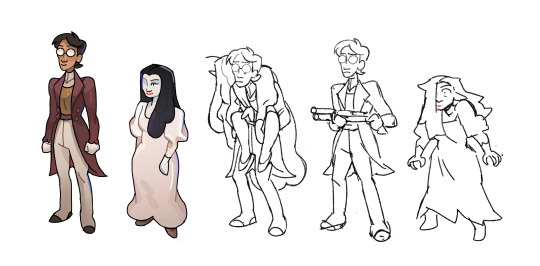
A fake "screenshot" of a strategy/puzzle visual novel game that I wish existed but doesn't. (it was mad for our hybrid comics workshop!)
I'm really proud of how this came out, I just channeled my love for the Disco Elysium and Hades styles haha.
#art#myart#drawing#digitalart#character_design#doodle#sketch#color#painting#artistsoninstagram#illustration#character#sapphic#gay#victorian#comics#comic#lgbtq+#hades#discoelysium#fakescreenshot#colors#vampire#videogame
2K notes
·
View notes
Text



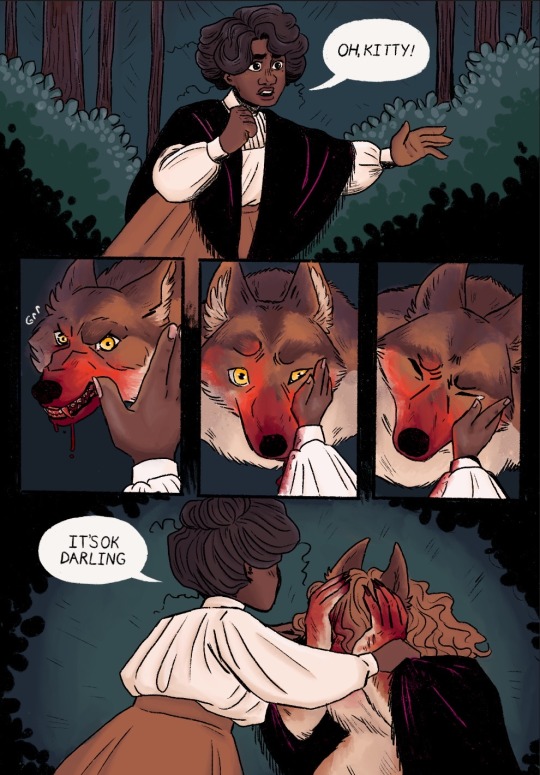
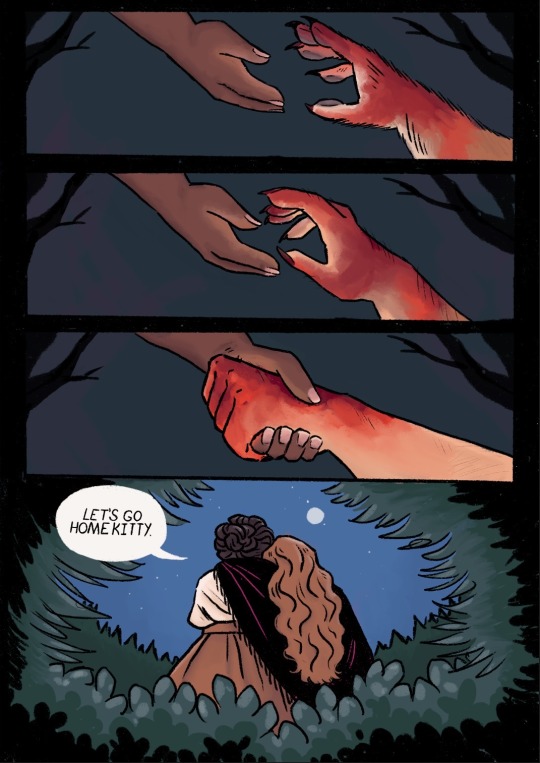
Come see my new art blog @halofthebramblewoods Werewolf girlfriend comic in a SCAD digital art class. I started digital art a few months ago. Lily and Kitty the Victorian girlfriends one of which is a werewolf.
#myart#art#werewolf#werewolf art#comic#mini comic#victorian#victorian fashion#werewolves#werewolf girl#werewolf girlfriend#lesbian#lesbians#gay werewolves#werewolf comic
4K notes
·
View notes
Text
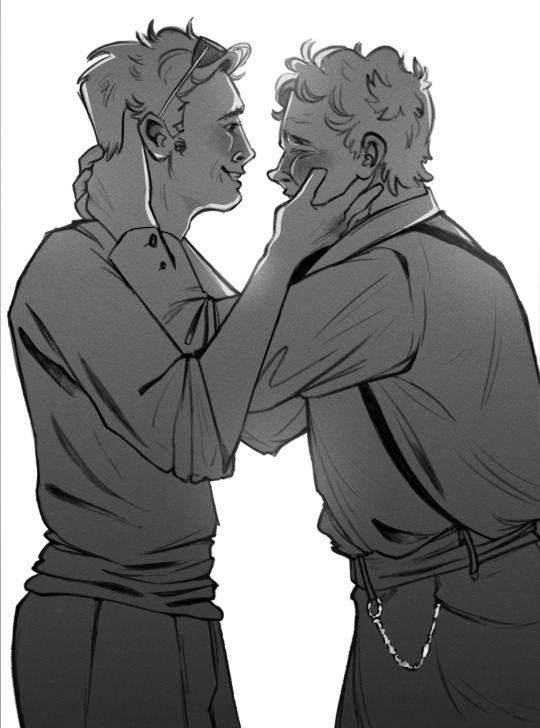
Let me look at you 💖
#another warmup sketch turned into … whatever this is#i should stop drawing gay Victorian men#THIS IS WHAT HAPPENS#the references are just too good#also forgot I had this one ready to post UPS#also my last GO fanart I have atm :((#hopefully I will draw them soon enough 🤞🏻#(if not ofmd COUGH)#good omens#good omens fanart#good omens season 2#good omens season two#gos2#go season 2#Aziraphale#Crowley#aziracrow#aziraphale x crowley#fanart#myart#illustration#csp#digital art
2K notes
·
View notes
Text
Can we all say thank you to Granada Holmes for showing Holmes and Watson reacting this way to a blackmailer bringing up how he destroyed a gay man’s life?
#the rage here? damn#I really appreciate that they made the effort to include that#because this sort of reaction would not be common at all#maybe people would feel sympathy for his wife and go#“oh that’s too bad#but this kind of kindness towards a gay victim is really extraordinary for a piece set in Victorian England#and also Milverton’s reaction to their reaction!#he seems interested by the fact that he’s hit their weak spot and even calls out holmes for being irrational and emotional about it#granada holmes#johnlock#jeremy brett#john watson#granada johnlock#the master blackmailer#happy pride#my post
2K notes
·
View notes
Text

Thinking about depeche mode…
#gravespatel#patelgraves#gideon graves#matthew patel#spvtw#spto#scott pilgrim#fanart#sorry my achilles heel is evil gay people#how would a Victorian child handle this#lolzies
415 notes
·
View notes
Text
Ending Soon! 😱💖
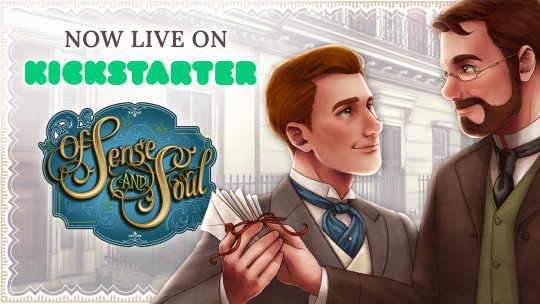
All your support means the world, thank you for being here with us! Of Sense and Soul is our Queer Victorian Romance visual novel and it has...
Two lives, one love story 🎩👓
Victorian setting 🕰️
Soft queer romance 🌈
Slow burn pining 🔥
Happily ever after 💖
Help us make Of Sense and Soul a reality and back our campaign here! 💪
(Backing is just one way to support the game; you can reblog & like this post to help us with our community challenges, too!)
Play our demo | Get our newsletter | Send us an ask 💌
#visual novel#indie game#queer fiction#historical fiction#historical romance#narrative game#kickstarter#crowdfunding#game dev#announcement#victorian#gay#queer#lgbtqia
823 notes
·
View notes
Text
Redraw of one of my first works here - retirement guys my beloved

#art#fanart#digital art#sherlock holmes#sherlock fanart#john watson#retirementlock#redraw#illustration#acd john watson#acd johnlock#acd sherlock holmes#victorian johnlock#ttfbs#the two from baker street#gay#bi
781 notes
·
View notes
Text
when a boy stretches and his shirt rides up showing the hem of his boxers and their tummy- AURGWHOHWURH
#i feel like a victorian man lookin at ankles#nblm#nblm blog#nblm post#nblm yearning#mlm#mlm post#mlm blog#t4t#gay#mlm yearning#nblnb#nblnb post#nblnb blog#nblnb yearning#mlnb#mlnb post#mlnb blog#mlnb yearning
6K notes
·
View notes
Text
reading the picture of dorian gray rn, where my niche gang at
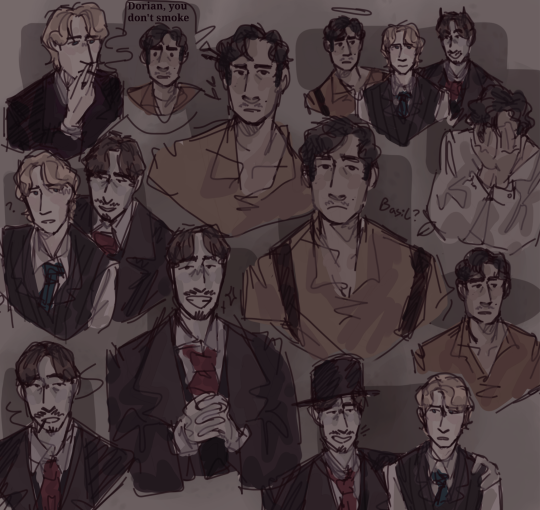





#the picture of dorian gray#oscar wilde#victorian#gothic literature#tpodg#the picture of dorian gray fanart#fanart#my art#dorian gray#twink#hot victorian twink in your area#victorian twink#basil hallward#lord henry wotton#basil hallward my boyfriend#my beloved#basil hallward you were too good for this world#queer literature#gay men#dark academia
301 notes
·
View notes
Text
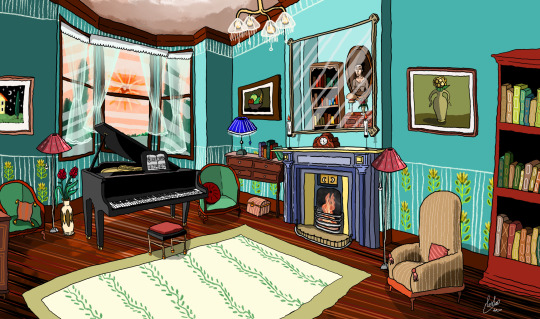
« Le Salon Du Pianiste »
#art#artists on tumblr#artpoetry#artwork#artlovers#artoftheday#drawing#surealism#art digital#procreate#art numérique#victorian#victorian house#gay artist#homedecor#vintage aesthetic#vintage#vintage home decor#vintage house
576 notes
·
View notes
Text
John Watson saying you join me and my companion/colleague/friend/flat mate while the only thing I can think of is oh please cut the bullshit.
Companion is already the gayest word in existence and yet you want to salvage yourself by flat mate in a desperate try of not using roommate which is actually nothing more than just the second gayest word in existence and you and I both know it.
Who do you think you’re fooling John, my beloved sweet summer child, only yourself I’m afraid.
#sherlock and co#it’s all about the childlike wonder and awkward words fumbling with this man#don’t you even try taking him away from me#actually who’s gonna bet with me that john will be the last person to know that he himself has fallen in love with sherlock#not would but will because it w i l l happen one day#like come on companion?? are we in the victorian times once again trying not to get arrested for the gayness or what please#do you mean companion like maybe achilles and patroclus? yeah well they were gay#or maybe companion like ennis del mar and jack twist that summer on brokeback mountain? oh no would you look at that they were gay too#you ain’t fooling anybody darling#john watson#sherlock#sherlock holmes#johnlock#goalhanger#goalhanger podcasts#sherlock & co
260 notes
·
View notes
Text
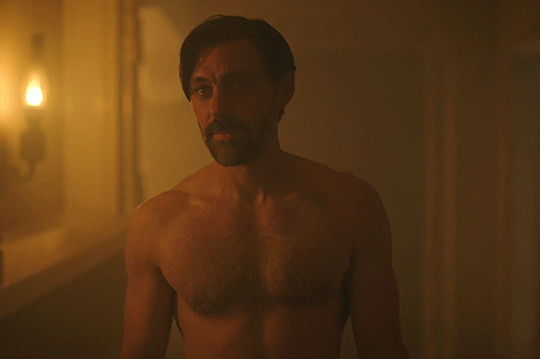

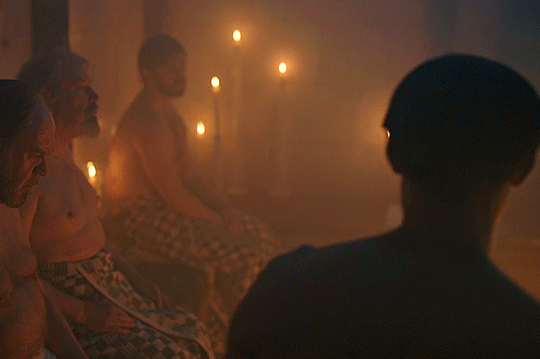
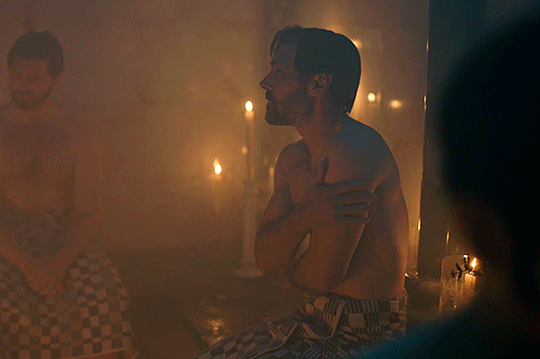
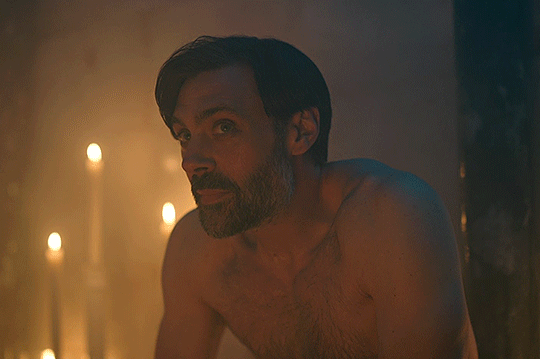

Liam Garrigan as Fletcher || Belgravia: The Next Chapter 1.04 (but just the sauna scene)
#liam garrigan#belgravia the next chapter#I jopped this gifset at a terminal velocity for y'all#can you belive lgarrigan got casted as another victorian manservant#CANONICALLY GAY#and he sneaked out of the house to go to a GAY SAUNA#AND HE SAW THE TWINK ASS REVEREND THERE#the main rich people plot is a bore not worth it but THIS#anyway#everyone say thank you to his agent right now#terror cast#my gifs
192 notes
·
View notes
Text
I was a gay time traveler who traveled back to Victorian England and met this world traveler. I told him about the future and he took me on his travels around the world while writing love poetry for his fiancé back home. Sometimes he’d read me the poetry while we held hands. I’d collect little souvenirs to take back to future with me. We’d look into each other’s eyes a lot.
#dream#text#June 15th 2023#gay#time travel#time traveler#victorian era#victorian#england#victorian england#world travel#world traveler#future#traveling#writing#poetry#love#fiancé#engagement#reading#poem#queueueueueueueueueueueueueue
652 notes
·
View notes